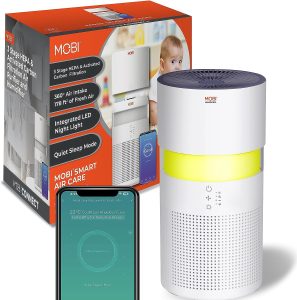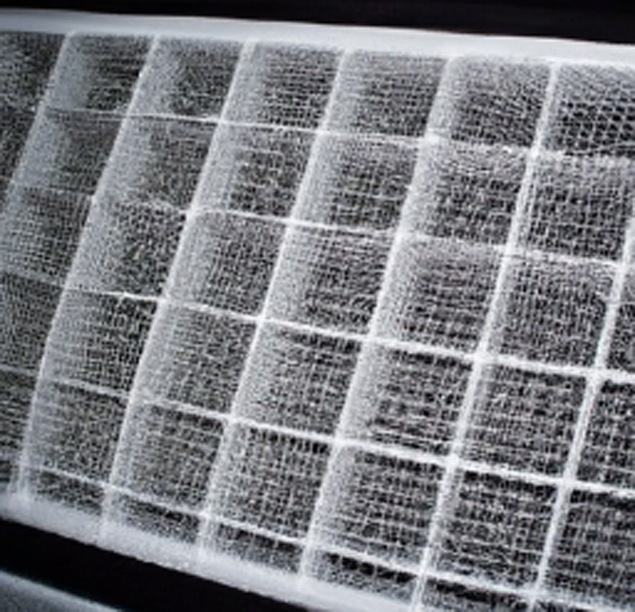We’ll talk about whether a home air purifier can actually lower indoor dust levels in this article. We’ll look at the many types of air purifiers on the market as well as how they operate. We will also explore the variables to take into account when selecting the best air purifier for your need. You’ll know more by the end of this article about whether purchasing a home air purifier may enhance indoor air quality and lessen dust in your living area.
Understanding Indoor Dust Levels
What is indoor dust?
Indoor dust is the collective term for the tiny particles that collect in our houses and are made up of a variety of substances, including skin cells, pet dander, pollen, dust mites, and even minute pieces of trash from our daily activities. These tiny particles, which can settle on surfaces, furniture, and even the air we breathe, are frequently too small to be seen with the naked eye.
Sources of indoor dust
Both indoor and outdoor sources are capable of producing indoor dust. Human skin cells, cat dander, dust mites, and mold spores are some indoor sources. Pollen, dirt fragments, and contaminants from the outdoors, on the other hand, can enter our homes through open windows or on our clothing.
Why is indoor dust a concern?
Despite its apparent safety, indoor dust can harm human health if it is not adequately controlled. It can aggravate allergies and respiratory diseases like asthma, leading to symptoms like coughing, sneezing, and wheezing. Additionally, dangerous compounds like lead and chemicals from common cleaning solutions can be found in dust and provide a risk if inhaled or consumed.
Introduction to Home Air Purifiers
What is a home air purifier?
A gadget called a home air purifier is made to take impurities and pollutants out of the air in our homes. It functions by sucking in air, filtering it, and then releasing clean air back into the space. To enhance indoor air quality and lessen the presence of allergens, such as dust particles, air purifiers are frequently utilized.
How does a home air purifier work?
To catch and remove dust particles, home Home air purifiers employ a variety of filtration techniques. The most popular kind of filter is a High-Efficiency Particulate Air (HEPA) filter, which has a 99.97% efficiency and can capture particles as small as 0.3 microns. To eliminate odors and pollutants from the air, some air purifiers additionally use extra filters, including activated carbon filters.
Types of home air purifiers
On the market, there are various different kinds of home air purifiers, each with special characteristics and filtration techniques. The most typical varieties include:
- Air purifiers with HEPA filters: These air purifiers employ HEPA filters to collect and eliminate allergens and other airborne particles like dust.
- Air purifiers with activated carbon filters: These filters are capable of efficiently removing chemicals, pollutants, and odors from the air.
- electric precipitators: These air filters collect and eliminate airborne particles by applying an electric charge. However, as a consequence, they could release ozone, which might be a problem for people who have breathing problems.
- Air purifiers that use ultraviolet germicidal irradiation (UVGI) use UV-C light to destroy germs, viruses, and mold spores in the air. Even though they can lessen the amount of dust mites, they might not be as good at removing the dust itself.
Effectiveness of Home Air Purifiers in Reducing Indoor Dust Levels
Can a home air purifier remove dust completely?
Home air purifiers are quite good at lowering the amount of dust in the air, but it’s vital to remember that they can’t get rid of all of it. Even after being removed from the air by filters, dust can still condense back onto surfaces. To improve the quality of the air indoors, a decent air purifier may dramatically reduce the amount of dust in the air.
Factors affecting the effectiveness of home air purifiers
A number of variables might affect how well a home air purifier reduces indoor dust levels. These include the room’s size, the Clean Air Delivery Rate (CADR) of the air purifier, the kind and caliber of the filters being used, and the regularity of filter maintenance and replacement.
Studies on the effectiveness of home air purifiers
Many research have been done to determine how well home air purifiers work at lowering indoor dust levels. According to a study that appeared in the Journal of Asthma and Allergy, using HEPA air purifiers dramatically lowered indoor dust levels and helped people with asthma and allergies with their respiratory symptoms. An further study that was published in the Journal of Occupational and Environmental Hygiene found that HEPA air purifiers were successful in lowering indoor dust levels and enhancing indoor air quality.
Choosing the Right Home Air Purifier for Dust Reduction
Considerations when selecting a home air purifier
There are a number of things to take into account when selecting a home air purifier to lower indoor dust levels. These factors include the size of the room, the particular allergies or pollutants you wish to eliminate, the purifier’s noise level, and your financial situation.
Important features to look for in a home air purifier for dust reduction
Look for an air purifier with a HEPA filter to significantly lower the amount of indoor dust because this type of filter is very good at trapping dust particles. Additionally, take into account the CADR rating of the air purifier, which reveals its capacity to exclude particular particle kinds and sizes. Additionally, it’s crucial to pick an air purifier with a coverage area appropriate for the size of the room and check that it runs silently.
Popular brands and models for dust reduction
High-quality air purifiers for reducing dust are available from a number of reliable brands. The well-known brands Dyson, Honeywell, Blueair, and Coway are just a few. Specific models, such the Blueair Classic 480i, Honeywell HPA300, and Dyson Pure Cool, have won praise for their ability to lower indoor dust levels.

Optimal Placement of Home Air Purifiers
Where should a home air purifier be placed?
A home air purifier should be installed in the room where you spend the most time or where the most dust accumulates in order to reduce indoor dust levels as effectively as possible. Bedrooms, living rooms, and home offices are typical spaces. Avoid positioning the purifier close to objects that could hinder the airflow, including curtains or furniture.
Understanding air flow for maximum dust reduction
Since air purifiers draw air from the world around them, appropriate airflow is essential for achieving the highest level of dust reduction. The air intake of the purifier may be restricted if it is placed in a corner or up against a wall. Instead, place the purifier in the middle of the room to ensure that clean air is evenly distributed throughout.
Avoiding obstruction of home air purifiers
The efficiency of a home air purifier might be decreased by obstructions like curtains, furniture, or other objects that block the airflow. Place the purifier in a space that is open so that air can readily circulate and be cleaned. To stop dust and debris from gathering and impairing the air purifier’s effectiveness, regularly clean and vacuum the space surrounding it.
Additional Measures for Dust Reduction
Regular cleaning and dusting practices
While a home air purifier can aid in lowering indoor dust levels, it’s crucial to utilize it in conjunction with consistent cleaning and dusting routines. You may lessen the buildup of dust in your home by vacuuming carpets and upholstery, cleaning hardwood floors, and using a microfiber cloth to dust surfaces.
Proper ventilation and air circulation
Reduced levels of indoor dust can also be achieved with proper ventilation and air flow. When the weather permits, open windows to let in fresh air and let out stale air. Use portable or ceiling fans to increase airflow and avoid air stagnation, which can lead to dust accumulation.
Reducing dust from outdoor sources
Take steps to restrict outdoor dust from entering your home as much as possible. This can involve removing shoes at the door, placing doormats at entryways to collect dirt, and routinely cleaning and maintaining external spaces like patios and balconies.
Maintenance and Care of Home Air Purifiers
Regular filter replacement and cleaning
To guarantee that a home air purifier continues to reduce indoor dust levels, proper maintenance is crucial. To avoid clogging and lower the possibility of recirculating collected dust into the room, filters should be changed in accordance with the manufacturer’s instructions. In order to clear out collected dust and particles from the inside and exterior surfaces, some purifiers could also need routine cleaning.
Cleaning the exterior of the air purifier
In order to prevent the accumulation of dust and debris, the air purifier’s exterior should be cleaned frequently. To clean the outside surface and get rid of any apparent dirt, use a soft, wet cloth. Use gentler cleaning agents rather than abrasive chemical ones that can scratch the purifier or leave residue on the surface.
Troubleshooting common issues
Consult the manufacturer’s user handbook for troubleshooting instructions if you experience any problems with your home air purifier, such as decreased airflow or strange noise. It could occasionally be required to get help from customer service or a qualified technician.
Monitoring Indoor Dust Levels
Using air quality monitors
Indoor dust levels can be measured and monitored using air quality sensors. These gadgets offer real-time data on your home’s air quality, including the quantity of dust particles. By keeping an eye on the levels, you can evaluate the efficiency of your air purifier and, if necessary, take additional action.
Visual inspection and evaluation
Visually inspecting your property on a regular basis might aid in locating locations where dust has accumulated excessively. Make a note of any chronically dusty places and look for dust accumulation on surfaces, furniture, and corners. This might assist you in determining whether your air purifier is successfully lowering dust levels or whether further cleaning or purifying is necessary.
Professional testing services
You can hire a professional testing organization for a more thorough assessment of the dust levels and indoor air quality. These businesses offer air quality testing that measures the concentration of several pollutants, including dust particles, using sophisticated equipment. The outcomes can help you get important knowledge about the efficacy of your present dust-reduction techniques and direct you in making wise choices to enhance indoor air quality.
Health Benefits of Reducing Indoor Dust Levels
Improvement in indoor air quality
Indoor air quality can be significantly enhanced by reducing indoor dust levels. A better atmosphere for you and your family is produced by cleaner air, which means less dust and other airborne allergens are present.
Reducing the risk of respiratory allergies and conditions
Respiratory allergies and pre-existing illnesses like asthma can both be made worse by dust particles. By using a home air purifier to lower indoor dust levels, you can lessen the risk of allergic responses and respiratory symptoms, supporting better respiratory health.
Promoting overall well-being
The quality of the air you breathe can improve your general health. A cleaner environment can result in better sleep, more vitality, and less stress. Furthermore, a dust-free environment can make a home more aesthetically pleasant and cozy.
Conclusion
In conclusion, a home air purifier can be a useful tool for lowering dust levels within and enhancing the quality of the air inside. While dust cannot be entirely eliminated, it may be greatly reduced in concentration, which lowers the risk of respiratory allergies and improves general wellbeing. Think about things like room size, filtration effectiveness, and maintenance needs when choosing a home air purifier. Utilize an air purifier in conjunction with consistent cleaning and dusting routines, good ventilation, and other strategies to reduce the amount of dust in your home. Ultimately, you can make your home healthier and more comfortable for you and your family by purchasing a high-quality air purifier and forming healthy dust-reduction habits.

